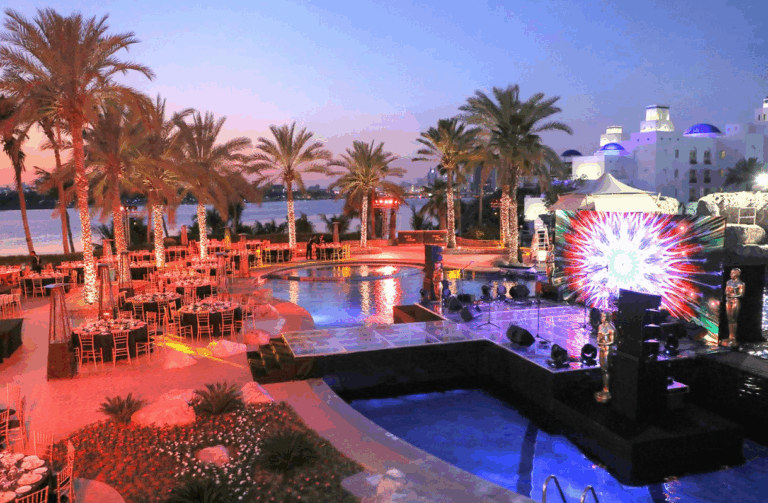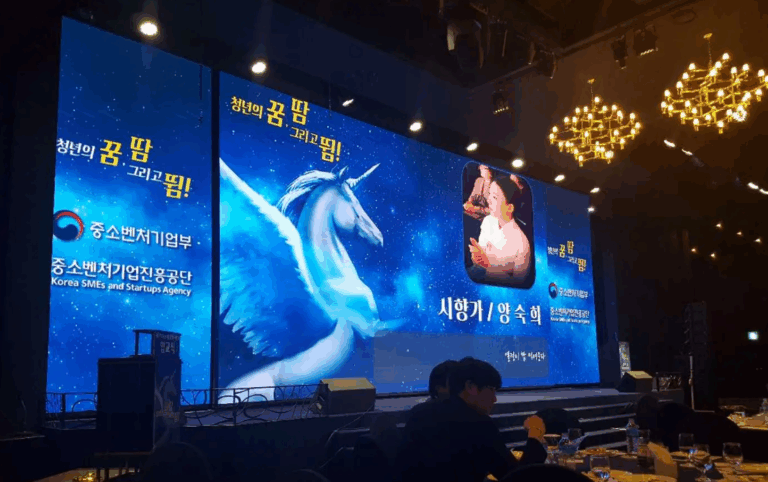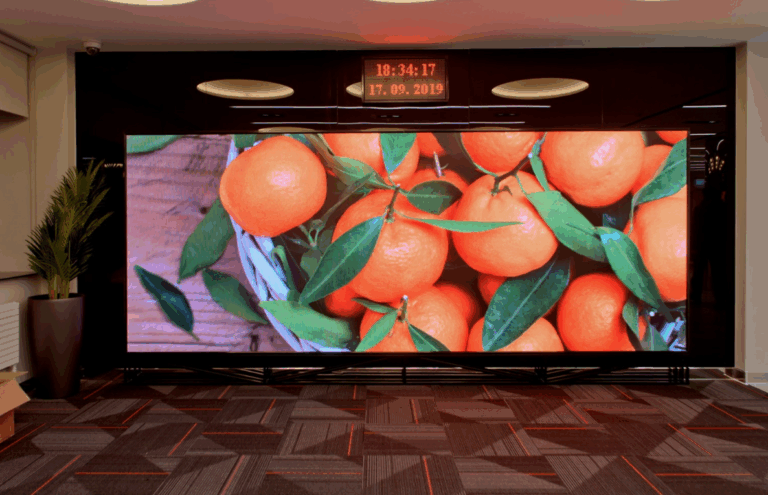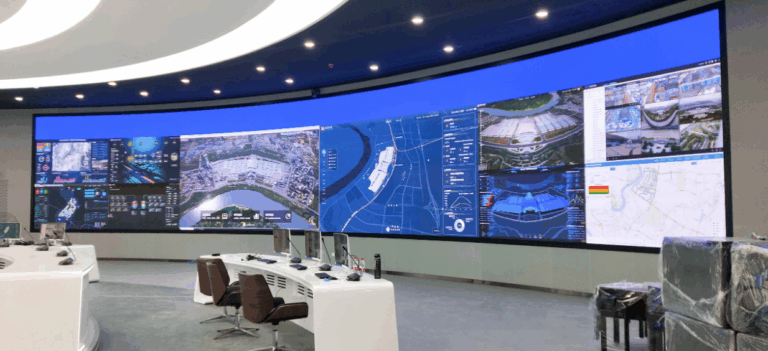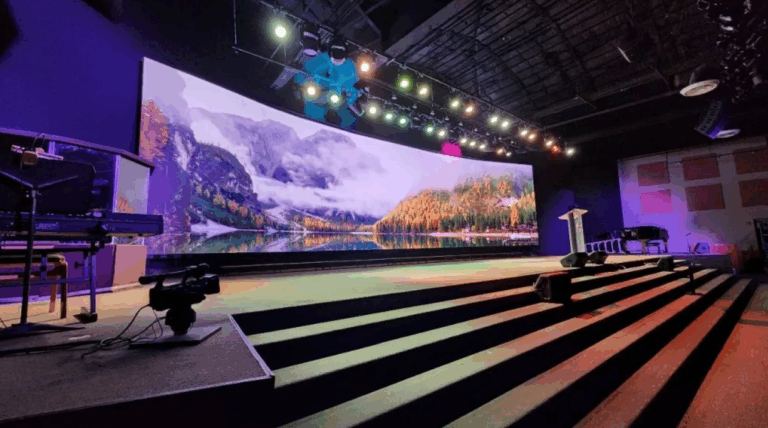Contents
-
What Exactly Is an LED Spherical Screen?
-
The Core Tech: Curved Panel Assembly + Image Correction
-
Real-World Case Studies
-
Cost Breakdown
-
Key Factors When Choosing a Spherical LED Display
-
How to Plan Your LED Sphere Project
-
FAQ
Most of us are used to talking about flat LED displays—but today, let’s mix it up. We’re diving into something that feels straight out of sci-fi: the LED spherical screen.
If you’ve been to Las Vegas lately, you’ve probably seen that massive glowing “Earth” dominating the skyline. Or maybe you’ve walked through Tokyo’s Ginza district and noticed a slow-spinning illuminated globe in a luxury storefront. That’s not a movie prop—it’s a spherical LED display, and it’s changing how we do advertising, exhibitions, and immersive brand experiences.
The truth is, a lot of people still think it’s just a “round LED display.” It’s not. There’s a whole world of specialized engineering, optics, and content strategy behind it. So let’s unpack the technology, the costs, and the decision-making process—so you know whether it’s worth the investment.
1. What Is an LED Spherical Screen?
Simply put, an LED spherical screen is made by assembling thousands of LED panels into a perfect sphere, creating a 360° view with no blind spots. But it’s not just “bending” a flat screen—everything from structural design to image mapping is completely reimagined.
Here’s how it differs from traditional LED walls:
-
Viewing Angle: Traditional flat LEDs have a viewing angle of about 120°–140°. A sphere? 360°, full coverage, front to back.
-
Structure: Flat screens are 2D; spheres are true 3D LED objects, requiring precise steel frameworks and custom curved panels.
-
Image Mapping: Flat LEDs play flat video sources. Spheres need spherical projection mapping (like equirectangular mapping) to avoid distortion.
-
Panel Design: Flat walls use rectangular modules. Spheres are built with hexagonal, pentagonal, or triangular modules—like assembling a giant soccer ball.
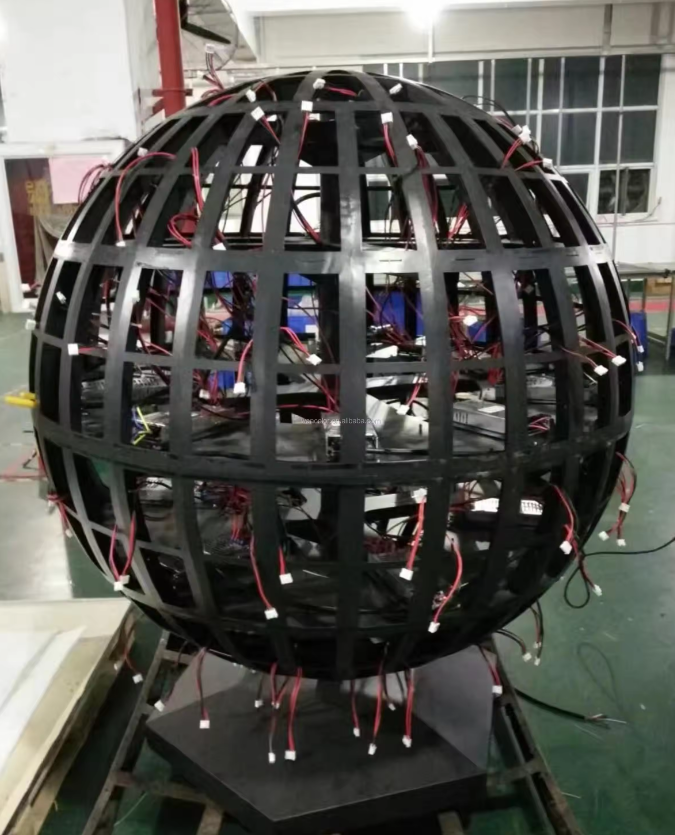
2. The Core Tech: Curved Panel Assembly + Image Correction
a. Curved Module Assembly
The “skin” of a sphere is made from specially designed LED modules, often hexagons and pentagons, matched precisely to the sphere’s radius. Any mismatch means visible gaps or bulges.
Major manufacturers like SoStron, Unilumin offer pre-engineered spherical module systems, with curvature radii as small as R300mm—allowing for anything from a 2-foot decorative globe to a 65-foot outdoor landmark.
b. Control System & Image Correction
This is where things get tricky. The control system needs to output to multiple channels in sync while applying real-time geometric correction. Top control system brands like Novastar, Linsn, and Colorlight have spherical mapping modules—but calibration can still take days.
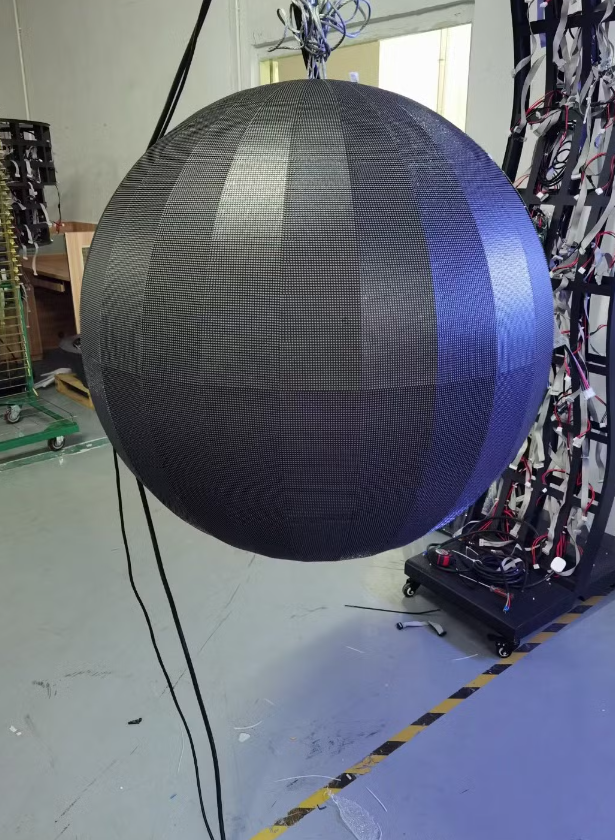
c. Seamless 360° Display
“Seamless” is the goal, but physics says there’s always some kind of join. You can minimize it with:
-
Gaps under 1mm using CNC-precision brackets
-
Common-cathode design to reduce dark edges
-
Pixel-level edge blending in software
-
High refresh rates (≥3840Hz) for smooth visuals
3. Real-World Case Studies
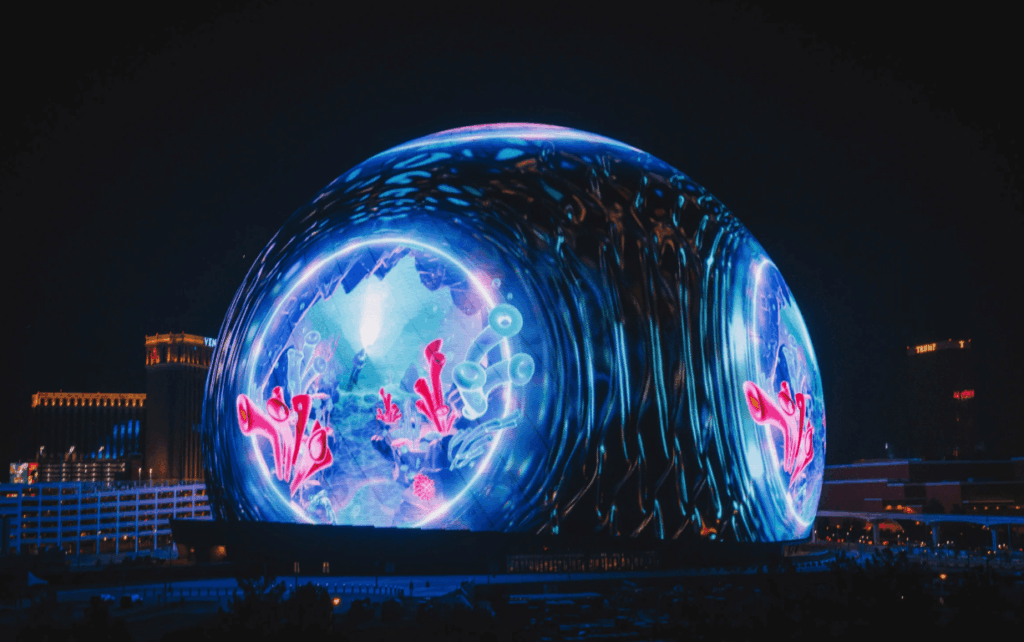
Las Vegas MSG Sphere – The world’s largest LED sphere opened in 2023. Standing 366 feet tall with over 580,000 sq. ft. of LED panels, it cost around $2.3 billion to build and contains over 50 million LED pixels.
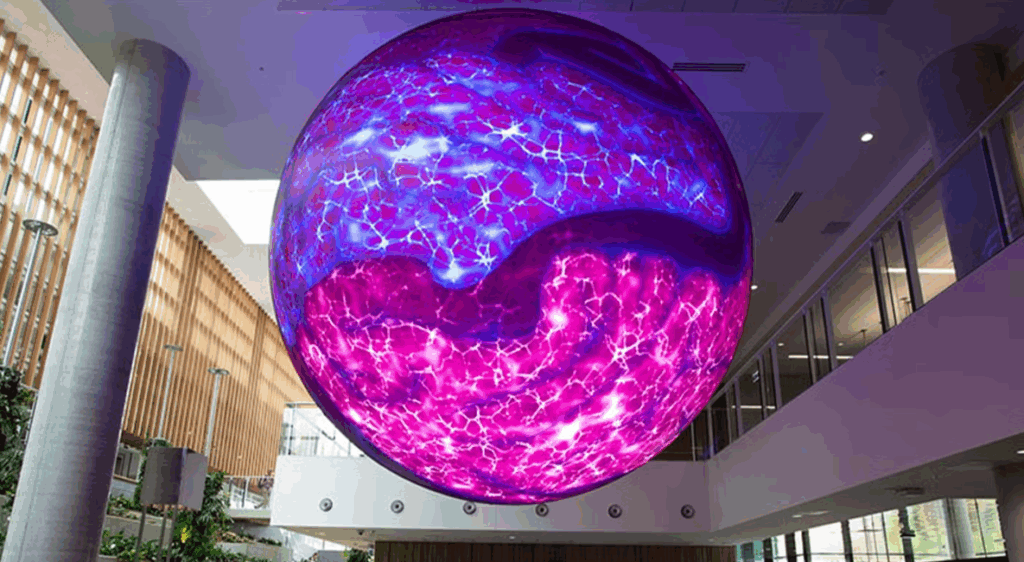
Tokyo Ginza Luxury Display – A high-end brand installed a 4-foot LED globe in its storefront. The result? Over 200,000 social media shares and far greater brand engagement than traditional window displays.
4. Cost Breakdown
Typical cost allocation for a spherical LED display:
-
Custom modules: ~40% of total cost (smaller pixel pitch = higher price)
-
Control systems: 20–30%
-
Steel structure & installation: ~20%
-
Content creation: 10–15% (3D content costs more than static images)
Example: A 10-foot diameter P4 LED sphere could cost between $100,000–$200,000, about 30–50% more than a flat LED of equivalent surface area.
Cost vs. Flat LED Walls
| Feature | Spherical LED | Flat LED |
|---|---|---|
| Cost | Higher | Moderate |
| Visual Impact | Extremely high | Average |
| Technical Difficulty | High | Standard |
| Creative Potential | High | Average |
| ROI Timeline | Longer | Shorter |
5. Key Factors When Choosing a Spherical LED Display
-
Resolution & Pixel Pitch – Smaller pitch = sharper image but higher cost. P2.5 is great for close-up viewing (10–15 ft), P4 or P6 works for long distances.
-
Size & Space – Spheres range from 1.5 feet to over 100 feet in diameter. Ensure the venue can handle the size and the weight.
-
Mounting Style – Hanging, floor-mounted, or embedded. Hanging offers dramatic effect but needs strong structural support.
-
Maintenance Access – Magnetic or modular panels make repairs faster and cheaper.
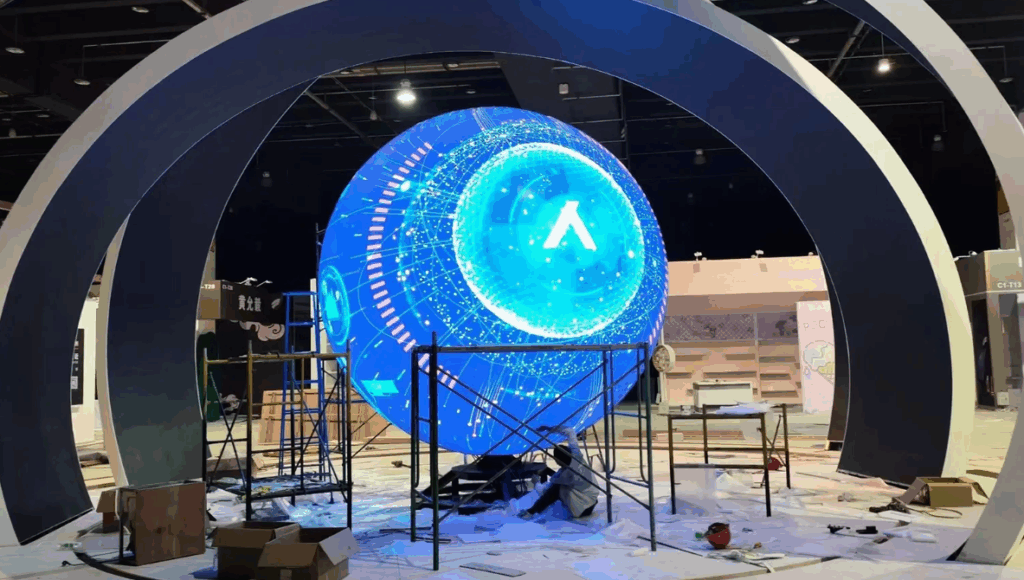
6. How to Plan Your LED Sphere Project
-
Define your goal – Is it a short-term campaign or a permanent landmark?
-
Budget for content – Allocate at least 15–20% for custom visuals.
-
3D simulation first – Model the sphere in its intended location before committing to fabrication.
7. FAQ
Q: How long do LED spheres last?
A: Around 50,000 hours—about 17 years at 8 hours per day—with proper care.
Q: Are they hard to maintain?
A: Slightly more complex than flat screens due to curved structure, but modular designs simplify replacement.
Q: Where are they used most?
A: Museums, shopping malls, exhibition halls, theme parks, and major events.
Q: What about installation requirements?
A: You’ll need strong mounting structures, proper ventilation, and reliable power. Outdoor models also require weatherproofing.
Bottom line
A spherical LED screen is not just a display—it’s a landmark. If you’re looking to make a brand statement and turn heads, it’s worth the investment. If you only need to run basic ads, a flat LED might be the smarter, cheaper choice.
Sources:

